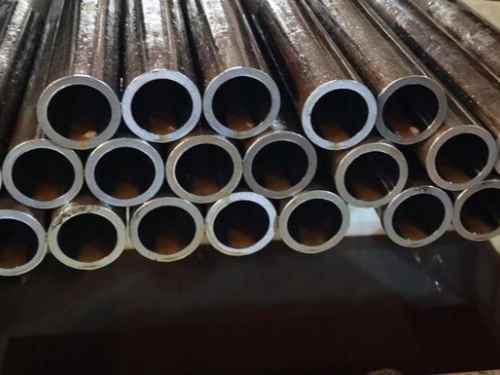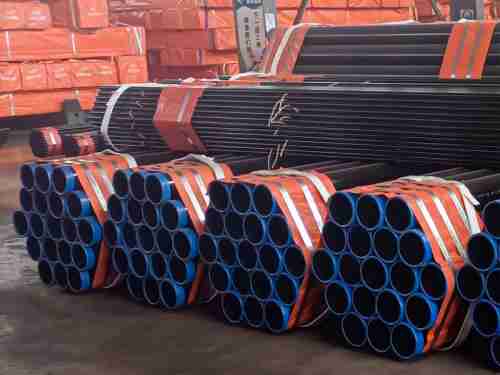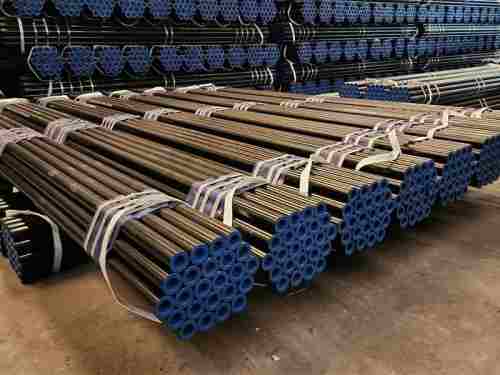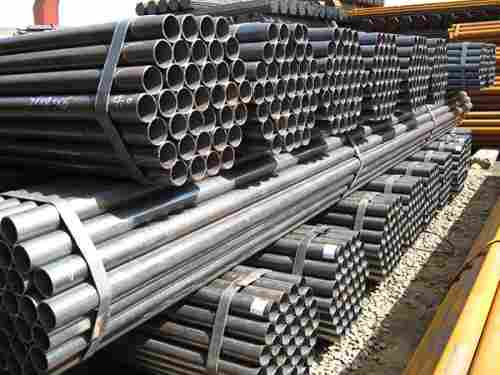The roughness coefficient of carbon steel pipe refers to the degree of surface irregularity or convexity on the inner wall of the pipe. It is a key parameter that measures the resistance to fluid flow and directly impacts transmission efficiency.
What Is the Roughness Coefficient of Carbon Steel Pipe?
Carbon steel pipe is one of the most widely used piping materials in industrial applications. Its surface condition—expressed through the roughness coefficient—affects how smoothly liquids or gases can flow inside the pipe.
The coefficient, often represented by the symbol ε, is influenced by factors such as:
Pipe wall material
Manufacturing process
Service environment and operating conditions
A smaller ε value means lower resistance, smoother flow, and higher transmission efficiency, while higher values indicate greater frictional losses.
Calculation Methods for the Roughness Coefficient of Carbon Steel Pipe
Absolute Roughness Method
Formula: ε = (e / pipe diameter) × 1000
e = absolute roughness (in meters), pipe diameter (in meters).
This method is suitable for general calculations using metric units.
Relative Roughness Method
Formula: ε = (e / pipe diameter) × 1000
e = relative roughness coefficient.
Commonly used for small-diameter carbon steel pipes, where ε typically ranges from 0.0001 to 0.05.
Empirical Formula Method
Based on reference data and experimental results.
More suitable for new or smooth-wall carbon steel pipes, where practical data gives a more accurate estimate.
Common Roughness Coefficient Reference Chart for Carbon Steel Pipes
The absolute roughness (ε) of carbon steel pipes is generally within the following range:
|
Pipe Type
|
Condition
|
Absolute Roughness ε (mm)
|
Relative Roughness ε/D (Typical Value)
|
|
New Carbon Steel Pipe (Cold-Drawn/Precision Tube)
|
Smooth Inner Wall
|
0.015 ~ 0.03
|
0.00005 ~ 0.0002
|
|
Common Commercial Carbon Steel Pipe (Seamless Pipe/Welded Pipe)
|
New Pipe
|
0.045 ~ 0.15
|
0.0002 ~ 0.001
|
|
Galvanized Steel Pipe
|
New Pipe
|
0.15 ~ 0.20
|
0.0005 ~ 0.0015
|
|
Carbon Steel Pipe in Service for Several Years
|
with Slight Scale/Corrosion
|
0.2 ~ 0.5
|
0.001 ~ 0.003
|
|
Old or Severely Scaled Carbon Steel Pipe
|
with Uneven Inner Wall
|
0.5 ~ 1.5
|
0.003 ~ 0.01
|
Factors Influencing the Roughness Coefficient of Carbon Steel Pipe
Pipe Quality and Manufacturing Process
The production method has a direct impact on pipe smoothness. Cold-drawn carbon steel pipes generally have a smoother inner surface compared to hot-rolled pipes. For welded steel pipes, the weld seam can cause localized increases in roughness, affecting flow resistance.
Pipeline Usage Over Time
With continuous operation, the inner wall of the pipe gradually wears down. This wear introduces irregularities, which lead to a higher roughness coefficient and reduced flow efficiency.
Fluid Velocity and Characteristics
High-velocity fluids exert greater friction against the pipe wall. As velocity increases, so does resistance, which in turn raises the effective roughness within the carbon steel pipe system.
Environmental Conditions
Harsh environments—such as humid, high-temperature, or chemically corrosive settings—accelerate rust and corrosion on the inner wall. This degradation increases pipe roughness and impacts long-term performance.
Conclusion
The roughness coefficient of carbon steel pipe is not just a technical value—it plays a critical role in determining fluid transport efficiency, energy consumption, and the overall stability of a pipeline system. To ensure cost-effective and reliable operation, it is essential to select high-quality pipes and take measures to preserve a smooth inner surface throughout service life.

 English
English Español
Español











